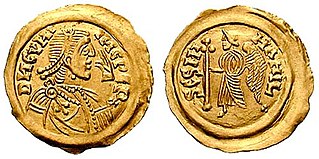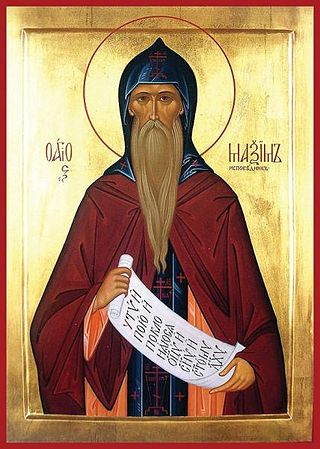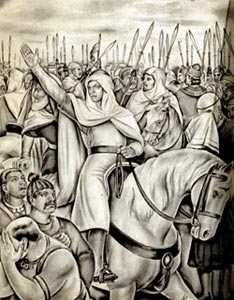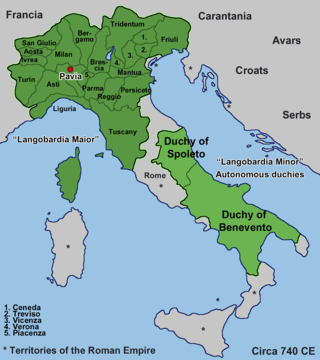The 660s decade ran from January 1, 660, to December 31, 669.
The 670s decade ran from January 1, 670, to December 31, 679.

Year 688 (DCLXXXVIII) was a leap year starting on Wednesday of the Julian calendar. The denomination 688 for this year has been used since the early medieval period, when the Anno Domini calendar era became the prevalent method in Europe for naming years.

Year 774 (DCCLXXIV) was a common year starting on Saturday of the Julian calendar. The denomination 774 for this year has been used since the early medieval period, when the Anno Domini calendar era became the prevalent method in Europe for naming years.
Year 763 (DCCLXIII) was a common year starting on Saturday of the Julian calendar. The denomination 763 for this year has been used since the early medieval period, when the Anno Domini calendar era became the prevalent method in Europe for naming years.

Year 788 (DCCLXXXVIII) was a leap year starting on Tuesday of the Julian calendar, the 788th year of the Common Era (CE) and Anno Domini (AD) designations, the 788th year of the 1st millennium, the 88th year of the 8th century, and the 9th year of the 780s decade. The denomination 788 for this year has been used since the early medieval period, when the Anno Domini calendar era became the prevalent method in Europe for naming years.

Year 662 (DCLXII) was a common year starting on Saturday of the Julian calendar. The denomination 662 for this year has been used since the early medieval period, when the Anno Domini calendar era became the prevalent method in Europe for naming years.

Year 711 (DCCXI) was a common year starting on Thursday of the Julian calendar. The denomination 711 for this year has been used since the early medieval period, when the Anno Domini calendar era became the prevalent method in Europe for naming years.

Year 657 (DCLVII) was a common year starting on Sunday of the Julian calendar. The denomination 657 for this year has been used since the early medieval period, when the Anno Domini calendar era became the prevalent method in Europe for naming years.

Year 663 (DCLXIII) was a common year starting on Sunday of the Julian calendar. The denomination 663 for this year has been used since the early medieval period, when the Anno Domini calendar era became the prevalent method in Europe for naming years.
Year 725 (DCCXXV) was a common year starting on Monday of the Julian calendar. The denomination 725 for this year has been used since the early medieval period, when the Anno Domini calendar era became the prevalent method in Europe for naming years.
Year 580 (DLXXX) was a leap year starting on Monday of the Julian calendar. The denomination 580 for this year has been used since the early medieval period, when the Anno Domini calendar era became the prevalent method in Europe for naming years.

King of Italy was the title given to the ruler of the Kingdom of Italy after the fall of the Western Roman Empire. The first to take the title was Odoacer, a barbarian warlord, in the late 5th century, followed by the Ostrogothic kings up to the mid-6th century. With the Frankish conquest of Italy in the 8th century, the Carolingians assumed the title, which was maintained by subsequent Holy Roman Emperors throughout the Middle Ages. The last Emperor to claim the title was Charles V in the 16th century. During this period, the holders of the title were crowned with the Iron Crown of Lombardy.

The Duchy of Benevento was the southernmost Lombard duchy in the Italian Peninsula that was centered in Benevento, a city in Southern Italy. Lombard dukes ruled Benevento from 571 to 774, when the Kingdom of the Lombards was conquered by the Kingdom of the Franks. Being cut off from the rest of the Lombard possessions by the papal Duchy of Rome, Benevento always had held some degree of independence. Only during the reigns of Grimoald and the kings from Liutprand on was the duchy closely tied to the Kingdom of the Lombards. After the fall of the in 774, the duchy became the sole Lombard territory which continued to exist as a rump state, maintaining its de facto independence for nearly 300 years as the Principality of Benevento.
Godepert was king of the Lombards, eldest son and successor of Aripert I. He was an Arian who governed from the ancient capital, Pavia, while his brother, Perctarit, a Roman Catholic, governed from Milan. In a war with his brother, he beckoned Duke Grimoald I of Benevento, who assassinated him in his Pavian palace, the Reggia. Godepert's son Raginpert managed to escape and would later rule, but first, Grimoald would seize the throne. He was buried in the Basilica of Santissimo Salvatore in Pavia.

Perctarit was the first Catholic king of the Lombards who lead a religiously divided kingdom during the 7th Century. He ruled from 661 to 662 the first time and later from 671 to 688. He is significant for making Catholicism the official religion, sparing the life of an invading leader, and building projects around the capital.

Grimoald or Grimwald (†671) was a 7th-century King of Italy, ruling as Duke of Benevento from 647 to 662, and then as King of the Lombards from 662 until his death in 671.
Romuald I, duke of Benevento (662–687) was the son of Grimoald, king of the Lombards. When his father usurped the throne in 662, he left Benevento under Romuald and sent the deposed king Perctarit's wife, Rodelinde, and son, Cunincpert, into exile at the Romuald's court in Benevento.
Garibald was the young son of Grimoald I of Benevento, king of the Lombards, and Theodota, daughter of Aripert I. After his father's death in 671, he reigned briefly for three months until the numerous adherents of Perctarit, his uncle, who had been exiled by Grimoald nine years earlier, besought their candidate to return and elected him, deposing the young king. He was the last Arian king in Europe.

The Kingdom of the Lombards, also known as the Lombard Kingdom and later as the Kingdom of all Italy, was an early medieval state established by the Lombards, a Germanic people, on the Italian Peninsula in the latter part of the 6th century. The king was traditionally elected by the very highest-ranking aristocrats, the dukes, as several attempts to establish a hereditary dynasty failed. The kingdom was subdivided into a varying number of duchies, ruled by semi-autonomous dukes, which were in turn subdivided into gastaldates at the municipal level. The capital of the kingdom and the center of its political life was Pavia in the modern northern Italian region of Lombardy.












